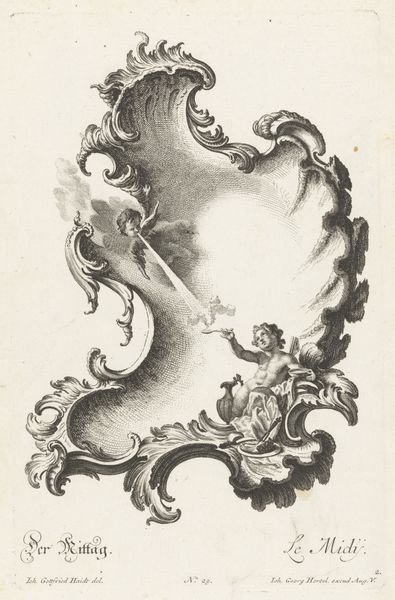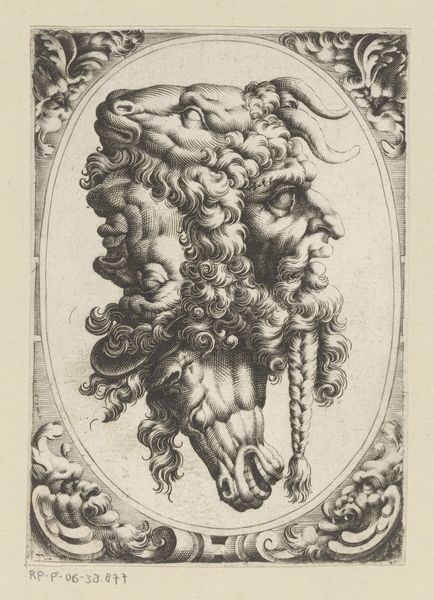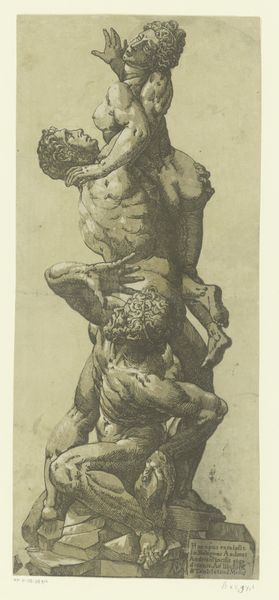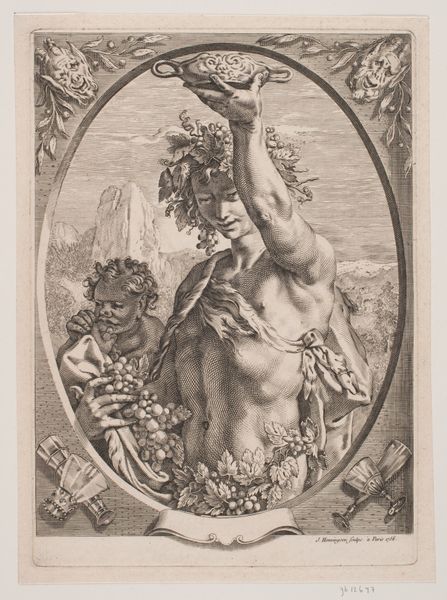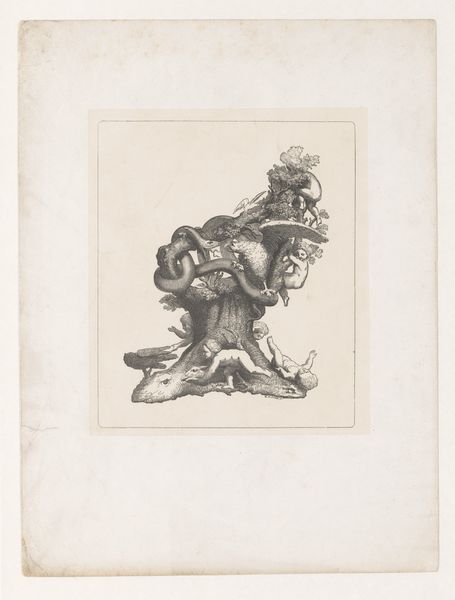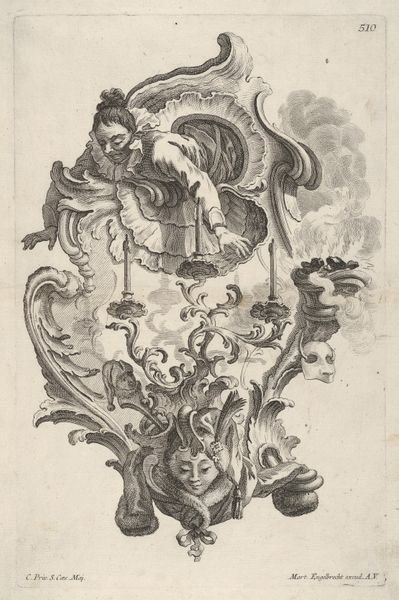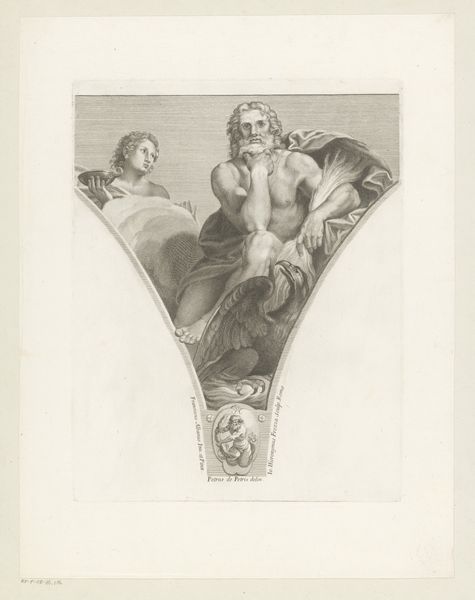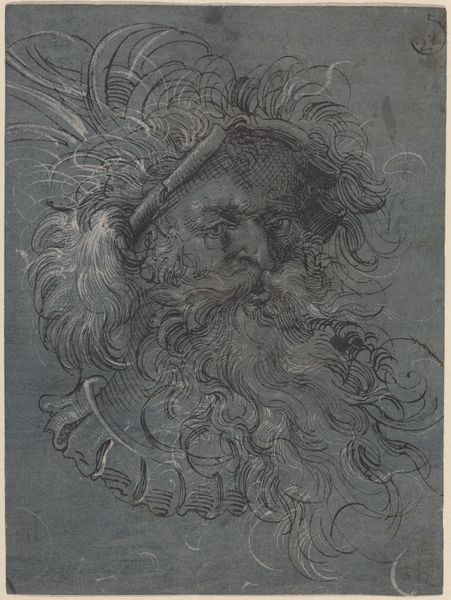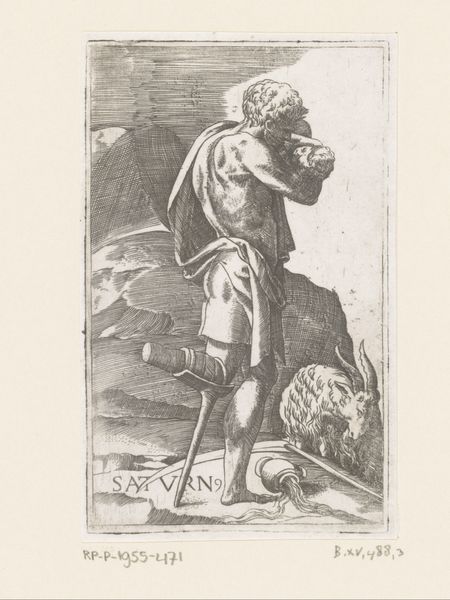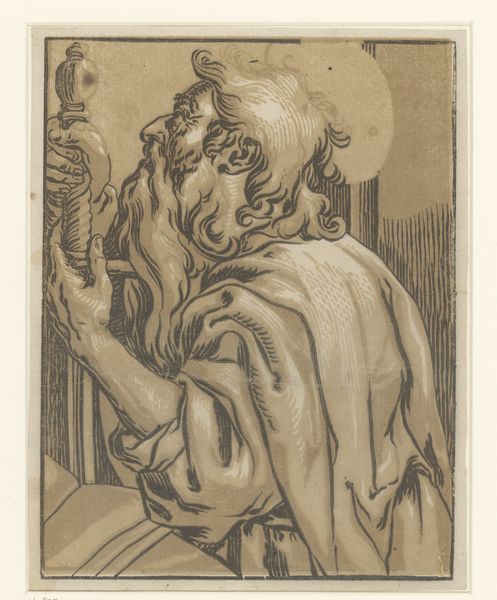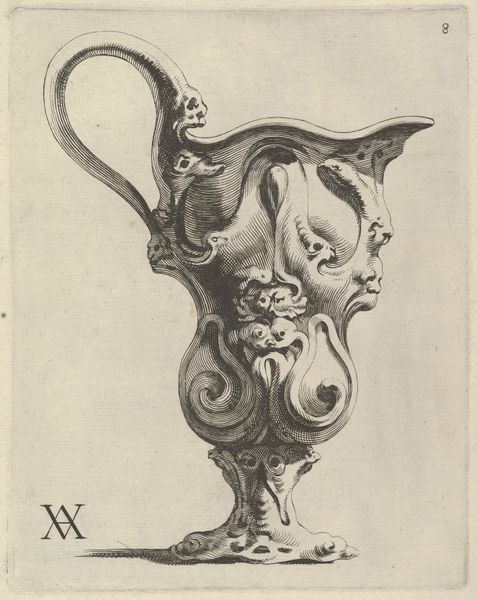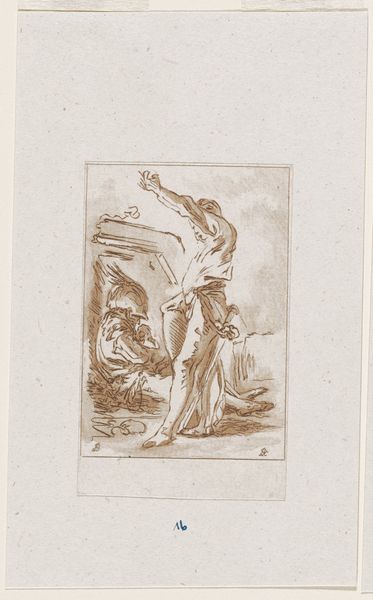
Dimensions: height 292 mm, width 184 mm, height 423 mm, width 570 mm
Copyright: Rijks Museum: Open Domain
Curator: Richard Earlom's "Head and Legs of a Rearing Horse," likely created between 1752 and 1777. It's currently held at the Rijksmuseum. Editor: Oh, my. The sheer power leaping off the paper—the rearing horse against that smoky background. It’s almost… operatic. Curator: Earlom worked primarily as an engraver, reproducing the works of other artists. So, it's unlikely to be fully his original creation. These types of engravings were quite popular for disseminating art to a wider audience, outside of the elite. Editor: So, it’s a copy of an image circulating amongst the classes? Interesting. This lends a more dynamic angle to understanding this print. Beyond its Romantic aesthetics – that incredible mane, almost violently cascading – do you know whose painting served as its foundation? Curator: Unfortunately, the specific origin remains somewhat elusive. We do know that the engraving involved graphite, charcoal, and a complex printing process, but I haven’t found anything pointing at what his initial sources could be. Editor: I'm struck by the formal elegance, but also the way it freezes the horse. Consider how frequently these images are read by enthusiasts who understand how horse lineages and equine exploitation are interlinked. Earlom might not have considered this tension explicitly, yet he reproduces it in a form that simultaneously evokes freedom and confinement. What do you feel he was doing? Curator: I can appreciate that observation. To me, Earlom highlights a struggle of taming the raw beauty of nature. This can translate into a larger metaphor for humankind's relationship with the natural world. How our desire to capture that wildness ends up controlling it. Editor: Perhaps a little too much grace is given to such acts, I think! I find its commentary slightly incomplete given the power imbalances implicit in that type of appropriation. Curator: These discussions show the capacity for works of art like this one to constantly generate discussion and push critical insight. Editor: That's right, bringing forward historical moments while also being a reflective moment to the contemporary eye.
Comments
No comments
Be the first to comment and join the conversation on the ultimate creative platform.
